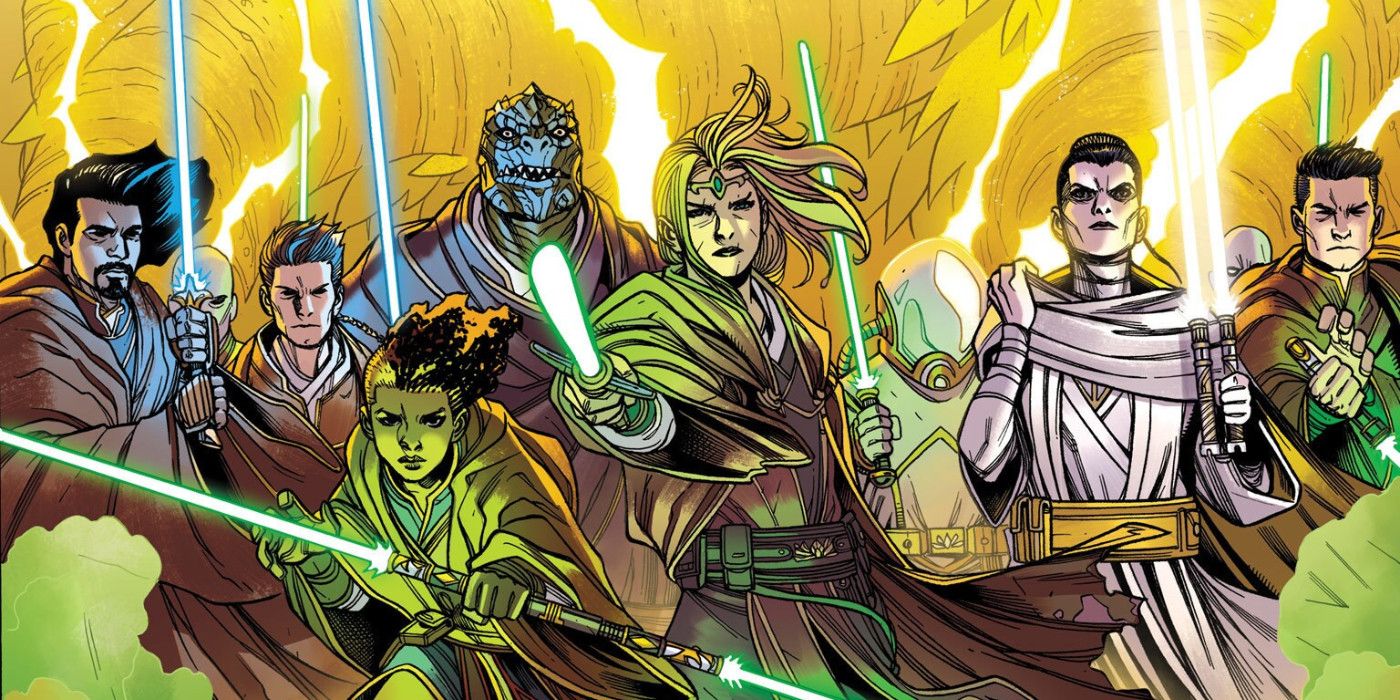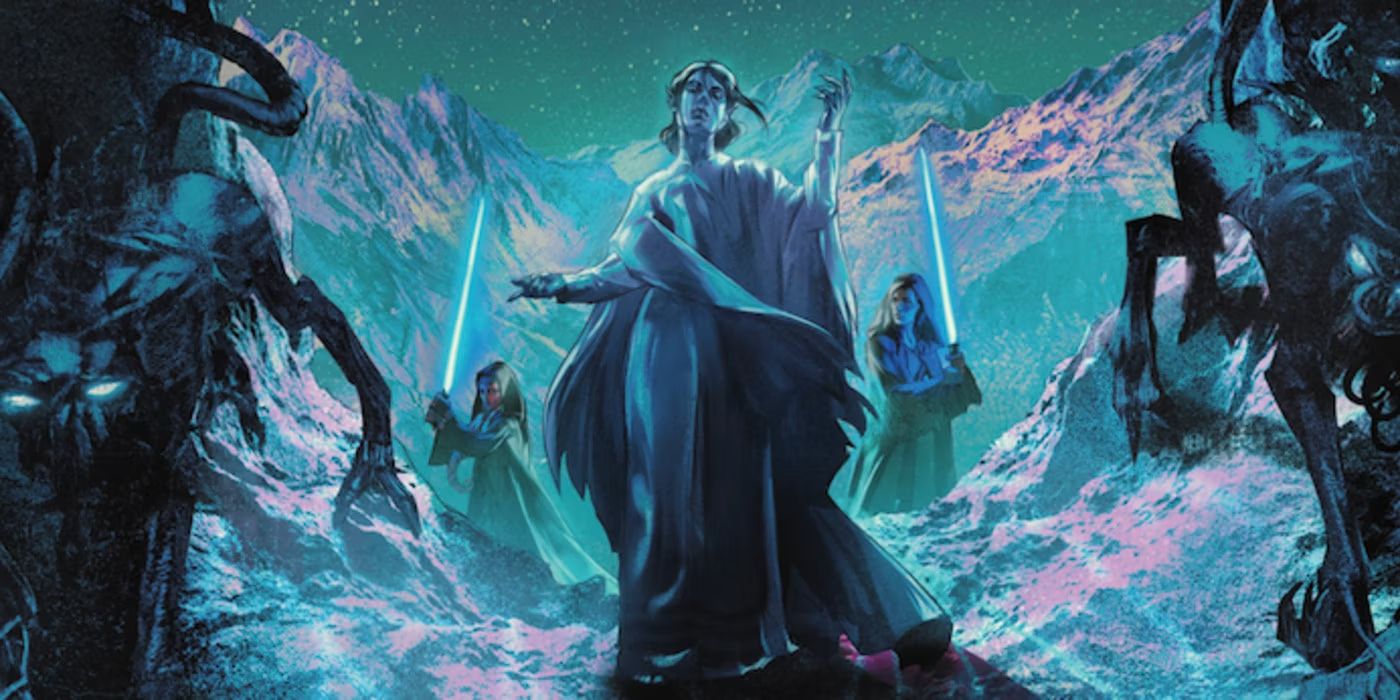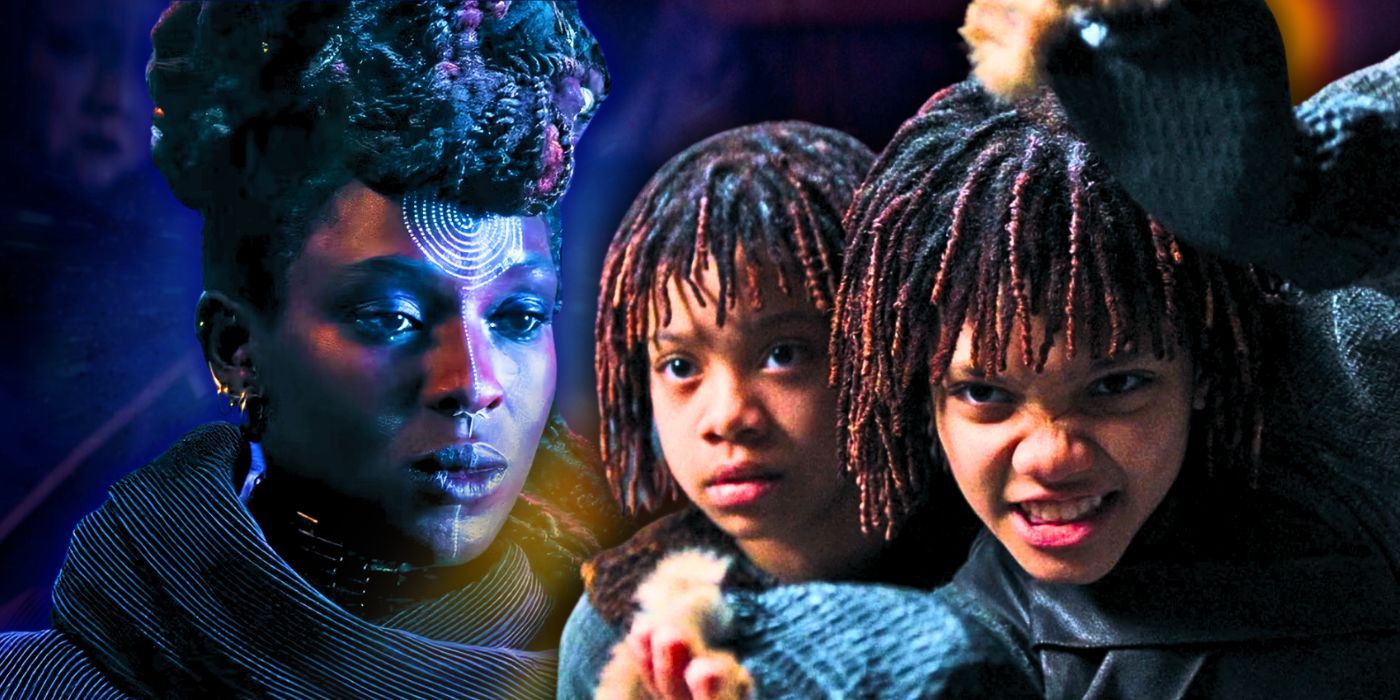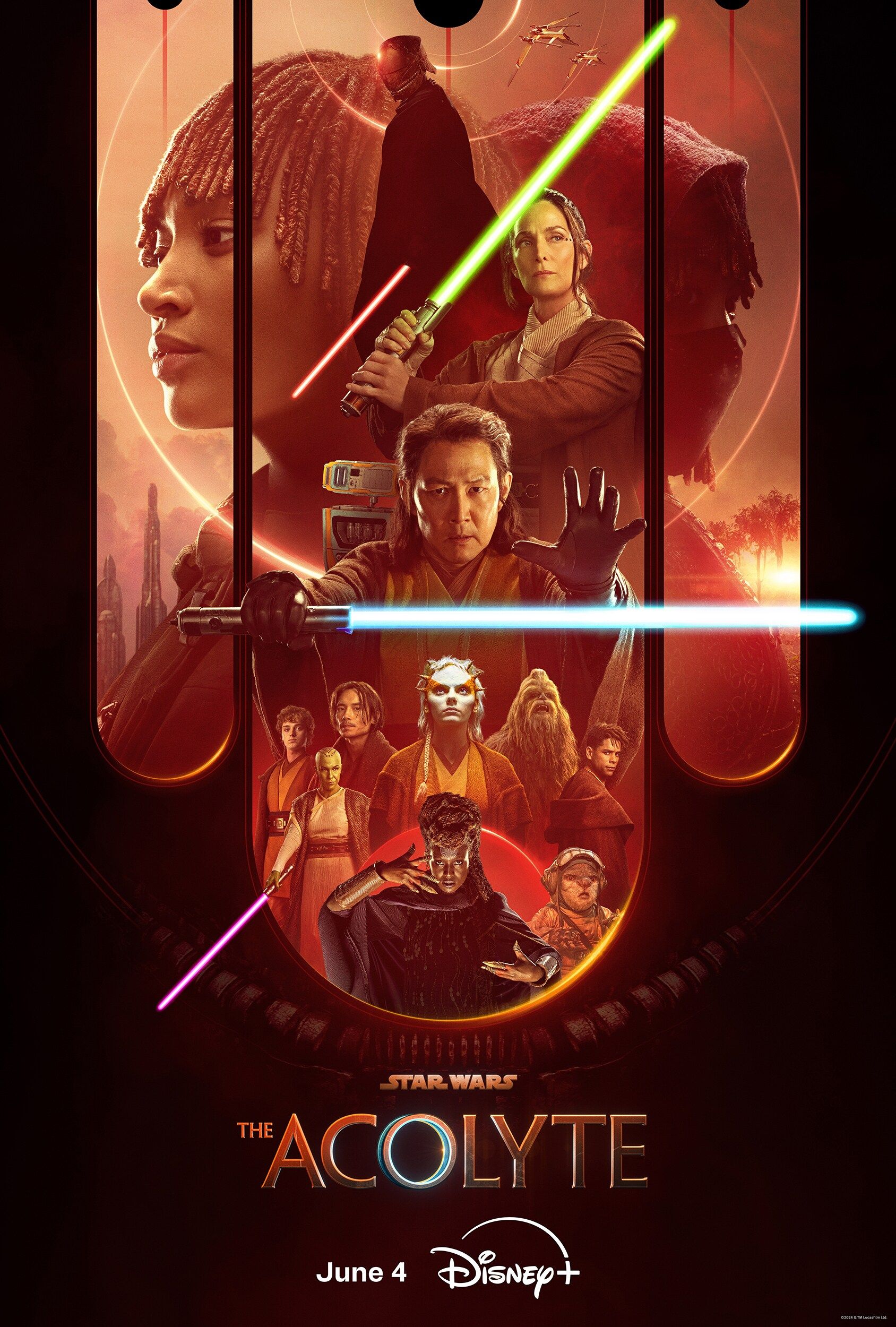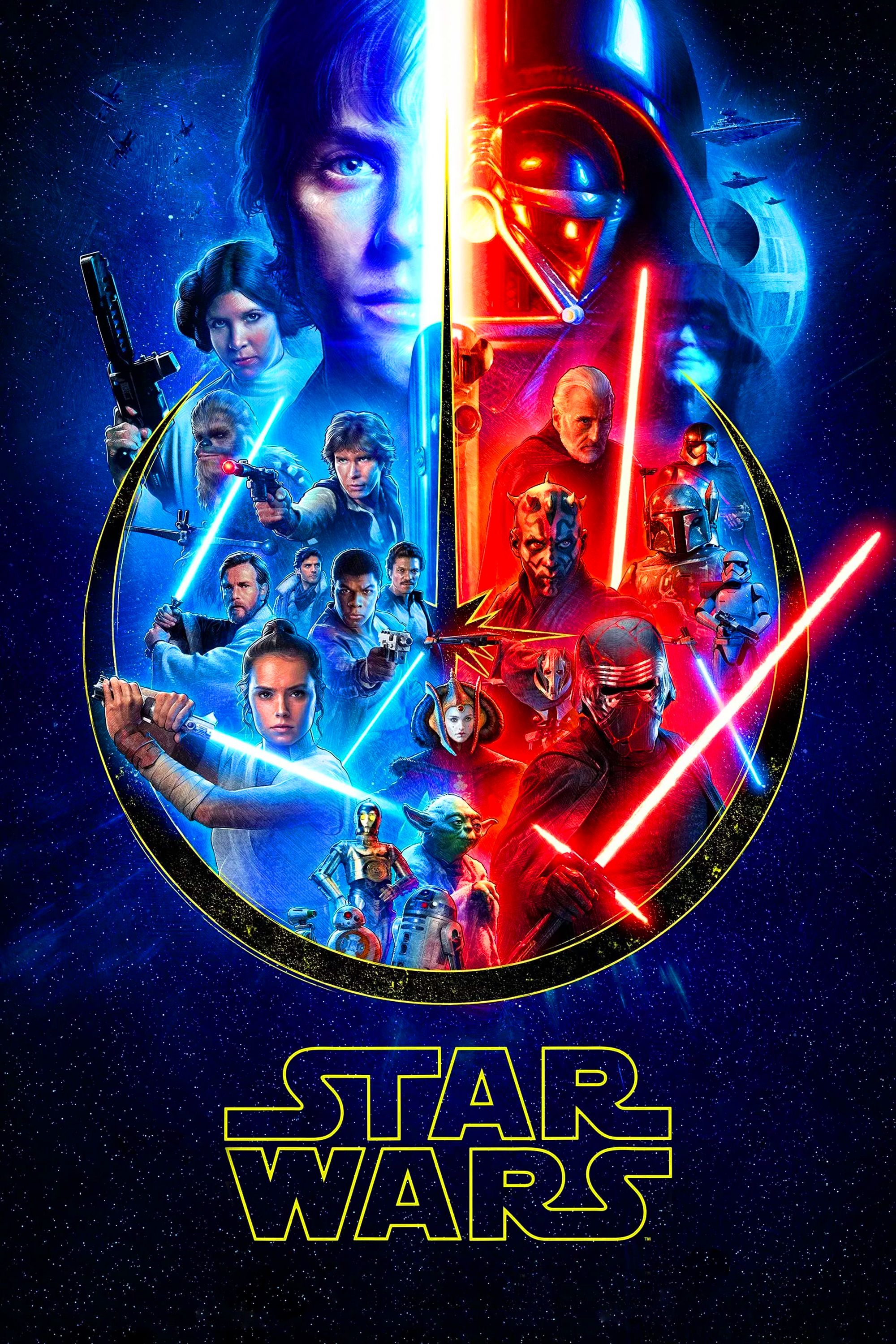Star Wars’ High Republic Era Has Made Me See The Jedi In A Whole New Light
Summary
- The High Republic era depicts emotionally vulnerable Jedi, different from the prequels.
- Jedi in this era are visible across the galaxy, facing criticism and disbelief from other cultures.
- Star Wars: The Acolyte challenges the Jedi’s actions, questioning their moral standing and imposition of beliefs.
Star Wars: The High Republic has changed how I view the Jedi and their role in the galaxy. Star Wars’ High Republic era chronicles the trials and tribulations of the Jedi Order roughly 350–100 years before the events of Star Wars: Episode I – The Phantom Menace. The Jedi of this era are not like the ones we know from the Star Wars prequel trilogy – they’re more emotionally vulnerable, they work with the Galactic Republic but aren’t intricately tied up in its political web, and perhaps most importantly, they haven’t yet retreated in on themselves.
We know the Jedi are flawed – Star Wars has examined the Order’s issues thoroughly, including their unnatural fear of the dark side, their restrictive adherence to the Jedi Code, and their unwillingness to learn from their past mistakes. And yet, throughout all of Star Wars’ previous stories, the Jedi are the ultimate force for good. They may be flawed, but in the context of the story, they are always morally right. The High Republic books and spinoffs like Star Wars: The Acolyte challenge that notion, however, and I believe that Star Wars is all the more compelling for it.
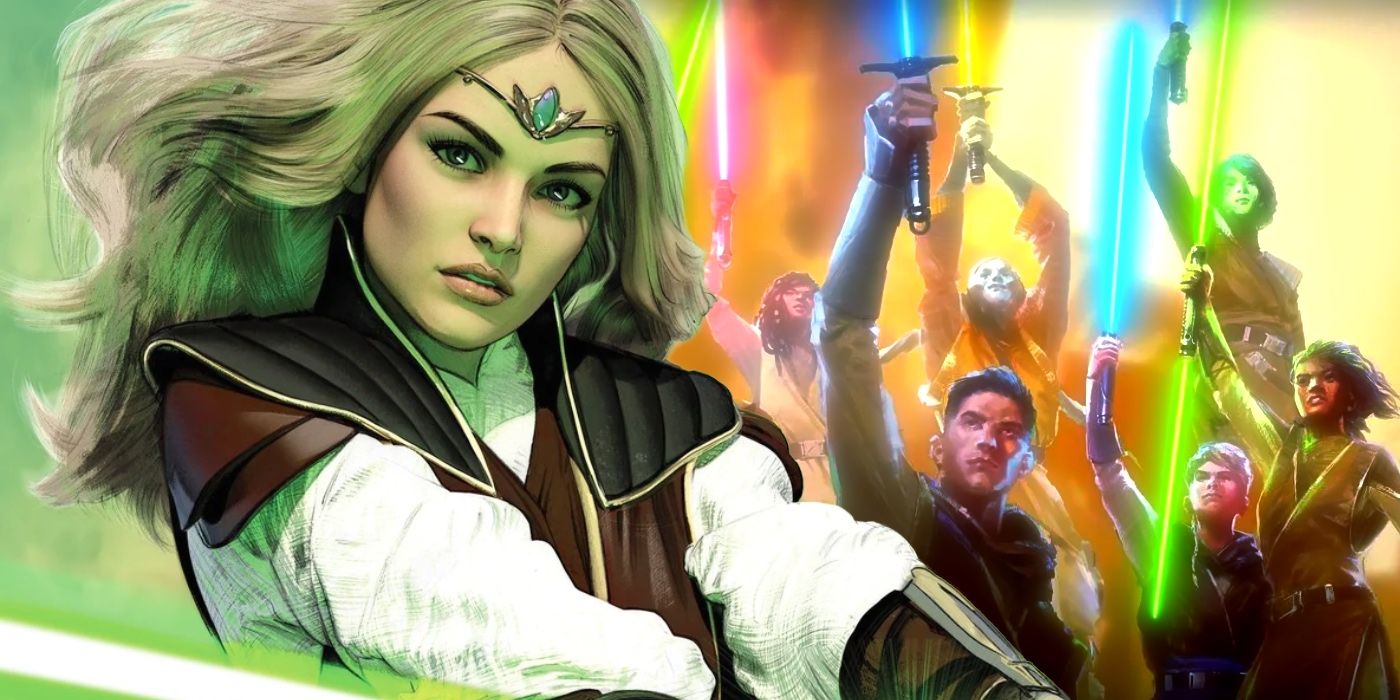
Related
Star Wars: Every Major Event Of The High Republic Era
The High Republic Era is full of significant events, both for the Jedi Order and the Republic it sought to protect long before the prequels.
The Jedi Are Scattered Across The Galaxy During The High Republic Era
During the High Republic era, there are Jedi Temples and outposts on dozens if not hundreds of different planets, many within the Mid and Outer Rims. In the early days of the High Republic, the Jedi were also part of an effort to scout the outermost reaches of the galaxy, hoping to open up trade routes between neighboring planets and provide diplomatic assistance whenever it was needed. This is a starkly different Jedi Order than the one we see in the prequels – those Jedi had retreated to the imagined safety of Coruscant, lending a hand only when called upon.
We as the audience know that the Jedi always try to do the right thing, but that doesn’t necessarily mean they are always actually doing the right thing.
Because the Jedi are so much more visible during this era, The High Republic books, comics, and shows also provide an understanding of how other cultures and communities view the Jedi, something which, in my opinion, has been sorely lacking within the franchise. We as the audience know that the Jedi always try to do the right thing, but that doesn’t necessarily mean they are always actually doing the right thing. During the Clone Wars, the Jedi were liberators. During the original trilogy, they were legendary knights and peacekeepers. But to some, they might have been something else entirely.
Depending on cultural context, other groups may be justifiably wary of the Jedi. In a galaxy with trillions of life forms, the Sith could not possibly be the only ones to disagree with the Jedi and their beliefs. These other groups may not hate the Jedi as much as the Sith do, but they can disagree with them all the same, and some of the disagreements that are woven throughout the High Republic era are genuinely understandable.
The Path Of The Open Hand Viewed The Jedi As Abusers Of The Force
The High Republic Phase II takes place 350 years before the events of the Star Wars prequel trilogy. This is a time of exploration for the Jedi, as they traverse the outermost reaches of the galaxy, helping those who cannot help themselves wherever they go. One such planet is Dalna, where a seemingly peaceful farming community inhabits a large stretch of land. These farmers aren’t what they seem, however. They’re actually members of a group known as the Path of the Open Hand, who believe that the Force should, above all else, be free.
The High Republic
publishing initiative is split up into three phases. Phase I is set 200 years before the prequels, Phase II is set 350 years before the prequels, and Phase III picks up where Phase I left off.
The Path was led to believe that the Jedi abuse the Force. According to them, whenever a Jedi uses their abilities to levitate an object or jump across a ravine, it causes a ripple effect somewhere else, potentially endangering another person’s life. We know this isn’t true, and the Jedi know this isn’t true, but that doesn’t mean their beliefs are inherently any less valid. Though some of the Path’s leaders used their followers’ naivety to coerce and manipulate them, on the whole, many innocently believed that their interpretation of the Force was correct.
They weren’t outright hostile to the Jedi until the Path’s leader, the Mother, told them to be. Hypothetically, however, if the Mother hadn’t been in charge, could the Jedi have justified their distrust of the Path? Would they have left them alone, or would the Jedi have forced their own beliefs and rules onto them, compelling them to change their ways? The High Republic’s first live-action show, The Acolyte, certainly makes that seem very plausible.
The Acolyte Proves The Jedi Weren’t Always Welcomed With Open Arms
In Star Wars: The Acolyte episode 3, “Destiny,” we are introduced to a new coven of Force-sensitive witches, much like the Nightsisters of Dathomir. It’s clear that these witches are powerful – it’s insinuated that they were able to manipulate the Force and create life, resulting in the births of twin sisters, Osha and Mae. It is also implied that these witches draw on the dark side of the Force. Understandably, the Jedi are wary of them, but what happens in the episode isn’t simply the Jedi treating these witches with caution.
Instead, four Jedi essentially break into the coven’s homestead, imposing their will upon them without any real evidence of actual wrongdoing. Mae and Osha are to be tested by the Jedi, and their mother isn’t given any room to argue. This is the Jedi’s law, and they will abide by it; otherwise, the consequences could be drastic. Is that truly the will of the Force? Are the Jedi so sure of their moral standing in the galaxy and their understanding of the Force that they won’t even take the time to truly learn what kind of magic the witches practice?
Can The Jedi Ever Be Morally Right If They Impose Their Will On Others?
“For light and life!” That is what the Jedi of the High Republic era fight for. To a certain extent, that’s true. They’ve protected various worlds and civilians from the frightful and violent Nihil, a band of pirates and marauders that have been terrorizing the galaxy to destroy the Jedi. They’ve sacrificed themselves to fight for the light, even against terrifying creatures who can turn the Jedi into desiccated husks. The Jedi do fight for everyone – or at least, they believe they do.
While reading and watching the stories of the High Republic era, it’s become clear to me that the Jedi fight for everyone who fits into their own, rather limited, worldview. Those who view the Force differently, those who use the Force differently, are automatically subject to the Jedi’s scrutiny, often to a very restrictive extent. Can the Jedi truly be a moral force in the galaxy if they are so easily willing to impose their own beliefs on others? Even if they have no proof that those people have harmed anyone else?
In that episode of The Acolyte, there is a lot of emphasis on how and when Force-sensitive younglings join the Jedi Order. Though the coven is told that they will not test the twins without their mothers’ permission, the witches aren’t given much of a choice. One of the Jedi who arrives at the coven, Master Sol, tells Osha that he was given the choice to join the Jedi when he was just four years old. Osha, being roughly eight years old, is excited by the prospect.
The Jedi are a galactic organization – they have abilities, resources, and weapons that others can only dream of. Can they genuinely be a force for good if there are so few who can oppose them?
Sol’s comment stuck with me, though. Previously, Star Wars has always implied that the parents are given a choice as well, but ultimately, depending on the child’s age, it seems they have a choice in the matter, too. This may seem diplomatic to the Jedi, but can a four-year-old ever truly understand the implications of joining the Order? Sol mentions that he always knew he was different from his family, but that doesn’t necessarily mean that his family couldn’t have raised him.
It’s a difficult conundrum, but this episode of The Acolyte, and other stories within The High Republic, proved to me that the Jedi aren’t always aware of the power imbalance between them and those they come into contact with. The Jedi are a galactic organization – they have abilities, resources, and weapons that others can only dream of. Can they genuinely be a force for good if there are so few who can oppose them? Should they be surprised when others disagree with them? It’s difficult to say.
It seems that the Jedi have yet to find the right balance. There’s a difference between standing against groups like the Sith and the Nihil, who are willing to commit atrocious acts of violence against anyone who stands in their way, and standing up to groups who haven’t truly done anything wrong (yet) or cannot physically defend themselves from the Jedi’s will. Star Wars: The High Republic examines this problem thoroughly, and the Jedi’s stories are all the more interesting because of it.




